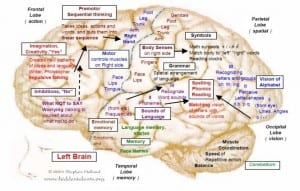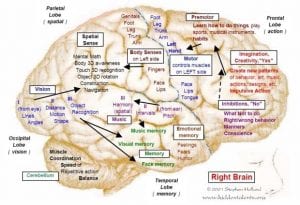Educate Yourself About Alzheimer’s
by Judy Bowman
While January is officially recognized as Alzheimer Disease Awareness Month, the ongoing mission of the Alzheimer Society is to educate and support families suffering through the process of this disease. On Wednesday, April 18, 2012, at the Rodd Miramichi, the local Alzheimer Society in Miramichi is hosting an Alzheimer’s Education Day.
For in depth information about the disease and resources, or to register for the Alzheimer Education Day, contact: Mary Jane Hickey at the local branch of the Alzheimer Society at: (506)773-7093.
Sound knowledge about the disease and community resources can reduce the stress of dealing with a loved one. Knowing that changes in the brain are irreversible with Alzheimer Disease, a caregiver can put the enormous energy trying to make a person remember to better use with other techniques and coping skills.
How important is it to know about this disease?
In a recent Canadian study, Rising Tides: The Impact of Dementia on Canadian Society October (2009), the statistics on Alzheimer’s Disease and related dementia are staggering. Internationally, we see more attention is being given this serious illness on mainstream television on shows such as Dr. Oz. This can only help get vital information to the public.
In New Brunswick, according to the study, more than 12,047 of our citizens and their loved ones already have a personal, often devastating, relationship with this illness. At present, many families are seeking medical answers and attention for the memory loss and behaviors of their loved ones. If diagnosed this year, these people will be among the projected 2,580 new cases.
Nationally, there are approximately 500,000 Canadians affected by this disease, with more than 71,000 being under the age of 65, and 50,000 are under the age of 60.
Look around your community and think about these statistics. There is a strong possibility that you could know that one person out of 11 people over the age of 65 who has the disease; or the one person in three over the age of 85. Of these people, women make up 72%.
The study found that of all the people with dementia in Canada, half of them live in their communities. Almost two thirds of those with dementia in the community have not been formally diagnosed. To imagine the turmoil and stress of day to day life for these people and their families is beyond our mind’s capability.
The prognosis is bleaker. Within just five years, an additional 250,000 Canadians could develop Alzheimer’s disease or a related dementia. Within 25 years, a generation, the number could reach between one and one point three million.
Do we have your attention? Or, does seeing the numbers, devastating as they are, make you want to stop reading, forget (intentionally) that Alzheimer Disease and related dementias exist and move on to something more uplifting?
Certainly these statistics tell those of us over age 50, that being in denial is no longer an option.
A healthy brain is a complex organ made up of several distinct parts, each with its own function that work interdependently. While composed of many different types of cells, the primary functional cell is called a neuron. All sensations, movements, thoughts, memories and feelings are a result of signals firing through these neurons.
From birth, our brains make neural connections that lead to the growth and development of our cognitive functions: our memory, our ability to think, reason, and understand, our judgment, and behaviour. All these are stored in specific areas in our brains.
Remember the enormous changes in our children’s first year of life learning to lift their heads, to later roll over, and then crawl. At the same time, they began to recognize faces, and develop language skills. Through their childhood, they learned many skills, made friends, played, and then grew up to learn social behaviour, responsibility and take part actively in society.

Functions of the left side of the brain courtesy of Stephen Holland. Click image to enlarge.
Unless, there is injury or disease, our brains work into old age. Challenge the wide spread myth that as we age, we will automatically lose our memories and minds. This is absolutely untrue. The aging process may slow down new learning as well as retrieving information, but give older adults a break and some patience; a long life means many valued memories and wisdom.
On these beautifully detailed, mind maps created by Stephen Holland, you can see where our memories of faces, names, music, our history and the ability to reason are stored, most of them in the frontal and temporal portions of the brain. You can see the region where creativity is stored, or the function of sequential thinking, processes that allow us to do basic functions such as getting dressed: first the underwear, then the pants and so on. The person with damage in that area may not realize that their underwear goes on first. Making a meal requires step by step planning and the same sequential thinking; we can follow a recipe in a book or make one from memory.

Functions of the right side of the brain, image courtesy Stephen Holland. Click to enlarge.
At www.hiddentalents.org , you can find detailed information about the major functions of the left and right side of the brain which will increase your understanding of the brain in health and in dementia. We challenge you to discover the two activities that use more parts of your brain. When Alzheimer’s Disease affects the brain, there are up to ten warning signs. A person may have some but not all the signs.
1. Memory loss affecting day-to-day function
2. Difficulty performing familiar tasks
3. Problems with language
4. Disorientation of time and place
5. Poor or decreased judgment
6. Problems with abstract thinking
7. Misplacing things
8. Changes in mood and behavior
9. Changes in personality
10. Loss of initiative.
What is happening to the brain in Alzheimer’s Disease is that tangles and plaques destroy the neurons. The brain shrinks in that region. Depending on where the damage is located, the information and function at that point is destroyed and the signs appear. Regarding mood changes: the neurotransmitters that affect mood travel the same neural pathways and cannot work effectively. You can find the site of these changes on the mind maps pictured above.
While Alzheimer Disease is the most common of dementias, there are others: Vascular dementia, Fronto-temporal dementia, Creutzfeldt-Jacob disease, Huntington’s disease, Head trauma, and Infectious diseases. Each disease affects the brain in different ways but the damage is irreversible and signs are often similar.
Dementia is an umbrella term that encompasses all these disease processes because they share similar losses in memory, understanding, judgment, communication. They are referred to as dementia when these losses affect day-to-day activities. For more information on the types of dementias click here.
As soon as you notice that memory loss and poor judgment is affecting your loved one, seek medical attention. This is very important for many reasons, two being:
1. The earlier the diagnosis, the person and their families have more opportunities to discuss plans and access resources for support that will enhance the quality of life.
2. There are reversible medical conditions which affect thinking and function: Depression, which causes changes in mood and thinking. Medications can interact with each other and anti-depressants and sedatives change thinking and mood. Nutritional disorders such as dehydration and vitamin deficiencies change thinking as do Metabolic disorders like thyroid disease, and others: pneumonia, urinary tract infections.
Despite news flashed on major news networks about breakthroughs in Alzheimer’s research, what is not being announced is a cure. Often, what is presented is a new link that could trigger the disease process. What researchers are focusing on are risk factors and how to reduce them.
So, what are risk factors?
“Risk factors are characteristics of a person, their lifestyle and environment that can contribute to the likelihood of getting a disease. They can include family background, work history, age, gender, or exposure to a substance or product. Some risk factors can be modified, example – lowering one’s blood pressure, other risk factors can not be modified, like one’s age or family history.” (from Alzheimer Awareness, Alzheimer Society of New Brunswick, 2011)
At present, age and family history are two factors that appear to be linked to developing this disease. These two risk factors mean that the chance of developing the disease is higher but it isn’t a certainty. People with no risk factors may still develop the disease.
Under research as risk factors are: Diabetes, Down Syndrome, Head injury, Low Levels of Formal Education, Aluminum, and Menopause in Women.
“In addition to the risk factors described above, all of the following have been documented as risk factors for Alzheimer’s disease: chronic inflammatory conditions (such as certain forms of arthritis), a history of episodes of clinical depression, strokes or “mini-strokes”, high cholesterol, high blood pressure, stress, inadequate exercising of the brain and obesity. Risk factors that are less firmly established include smoking, excessive alcohol consumption and taking drugs of abuse.” (from Alzheimer Awareness, Alzheimer Society of New Brunswick, 2011)
If all of these seem completely overwhelming, look at the list, decide what category of risk you fall into and be proactive in reducing it:
· live a healthy lifestyle
· eat a well-balanced diet
· exercise your body
· exercise your brain
· follow your doctor’s advice in managing your blood pressure, diabetes, cholesterol levels, etc.
· Educate yourself: www.alzheimer.ca and www.alzheimernb.ca
Seek medical attention when the day-to-day life of one of your loved ones is affected by loss of memory. Being diagnosed is not just a quick visit to the doctor, it can take time. Often the diagnosis comes by ruling out other possible causes and taking into account the results of a medical history, a physical exam, laboratory tests, a Mini-Mental State exam (MMSE) and neuropsychological evaluations. These can be done at doctor’s office, or local hospital and in the community.
Most importantly, educate yourself. Be your loved one’s advocate. Stand up for their rights to be treated with dignity and respect. Having dementia does not mean that people lose their rights. As important as the physical and safety needs, they have a right to feel love and belonging, to have their self-esteem maintained and to have meaning in their lives.
Stand up for them to make sure they have a better quality of life, insist on new, modern facilities with professional staff to support and maintain these rights, especially those of self-esteem and socialization. It makes life better for all concerned and for those who develop the disease later. And if after all this information, you think that Alzheimer Disease doesn’t affect you, remember this: Judging by the statistics, you could be that one in 11, or the one in three over the age of 85, or one to one point three million in the future.
Judy Bowman is a freelance writer, writing workshop facilitator, and frequent contributor to Bread ‘n Molasses from Miramichi, NB. A past-President of the Writers’ Federation of New Brunswick (WFNB) and current regional liaison for the WFNB in Miramichi, her writing has been published internationally. Judy also volunteers with the Alzheimer Society.
Giv’er Miramichi is about “What’s up, what’s new, what’s happening”. We are focused on building people up, supporting one another and celebrating our successes.
